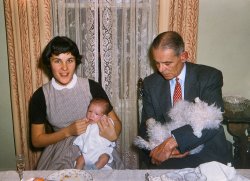
MAY CONTAIN NUTS

Search Shorpy
SHORPY ART

Framed or unframed, desk size to sofa size, printed by us in Arizona and Alabama since 2007. Explore now.
Join and Share
Ad-Free Shorpy
Shorpy is funded by you. Patreon contributors get an ad-free experience.
Learn more.

Recent comments
- Now that's a service station!
- Union Switch & Signal
- Still there -- but not a garage any more
- Must be good breezes there
- Wowzers
- Treescaping
- Still Life With Operator
- +112
- Rear View
- Way in the back --
- Button It Up
- And with an eye on the time ...
- Working in an enclosed ashtray
- Rear View Mirror?
- Tobacco cam
- Basic fact I learned only later in life
- Put a Lid on it!
- Pinstripes in the Tower
- Sound enhancement
- 3438 in '38
- Second Career
- Their days are numbered
- Only the Sensor
- Train control mechanism
- Rarest of the Rare?? & Classy 3400 Class
- Control Mechanism
- Those standpipes
- Wrenches
- International D-40 I believe
- Job prospects
Member Photos
The Shorpy
Printporium
Printporium
Search Shorpy
Search results -- 30 results per page
- The Alley: 1920
- ... the buildings did a switcheroo and traded places in the night. I was puzzled until I realized they must have razed the one brownstone ... Posted by Dave - 10/01/2011 - 2:36am -
![The Alley: 1920 Washington, D.C., circa 1920. "Smallwood, 1726 P Street." A variety of window treatments here. National Photo Company glass negative. View full size.
P StreetI've always loved the houses on this section of P Street. Looks like at some point the house at 1726 was torn down and the alley was shifted to accommodate an apartment building. 1728 remains.
Looks like 1726 is now the alley.View Larger Map
Watergate flowerpotThe apartment to the left was replaced by the Webster House, at 1718 P Street, built in 1968. Bob Woodward had a small studio apartment there during his Watergate adventures. He would put a flowerpot in the window of No. 617 as a signal to Deep Throat (Mark Felt) that he wanted to meet.
Beautiful bayThe house on the left that was torn down was a beautiful building. I love the stonework around the bay window on the 2nd floor.
What's going on today?Google Street View shows that #1726 still exists today in remarkably unchanged condition. Its neighbor to its right has been extensively modified and doesn't look all that nice anymore.
Where things get confusing is to the left of #1726. A building now stands in what was once the alleyway, and from its appearance it probably was built not long after this photo's 1920 date. So what happened to the building that stood to the left of the alleyway? It must have been demolished when the new building went up shortly after 1920, but in this photo it hardly seemed anywhere ready for demolition. Did it burn down?
Further note: the "new" building to the left of #1726 does not merely fill the old alleyway. It appears to the wider than the alleyway and therefore its construction would have required the demolition of the former #1724 decades before the construction of the Webster House in 1968.
Alley lives; house not so much The alley would later expand and take over the house at 1726, but 1728 is still there and so is the tree out front, which you can see is a bit taller now
Also you cannot give up a good parking spot even 91 years later.
I want my MaypoleA Shorpy mainstay, the circular telephone drop. There must have been thousands of these back in the day.
Some still there, sort ofThe houses to the right of the alley have undergone some changes, but parts of P street are as I remember them from Back in the Day.
One third offThe uppermost floor and elegant roof details are gone from the Google view, which is unfortunate. Perhaps fallen victim to a fire at some point?
[Look again. The upper floors are still there. - Dave]
Want to be freaked out?It would appear that the buildings did a switcheroo and traded places in the night. I was puzzled until I realized they must have razed the one brownstone and moved the alley over for the newer building to the left. Freaky still.
View Larger Map
Alley GirlHer standing there staring at the photographer gives this photo a nice touch of mystery!
The squiggly line down the side of the building, is it a scratch in the plate or maybe a firefly or a ball of St. Elmo's Fire running through the alley?
Hudson - Performance, Service, ValueThe car is a circa 1914 - 1917 Hudson. The triangular logo on the radiator stood for performance, service, and value. The license plate appears to be a 1920 Washington D.C. plate. In 1929 Hudson would be the 3rd largest automobile manufacturer after Ford and Chevrolet.
(The Gallery, D.C., Natl Photo)](https://www.shorpy.com/files/images/SHORPY_29915u.thumbnail.jpg)
- Liberty Garter: 1908
- ... widow, earns 75 cents a day by working all day until 12 at night. Bessie works until 10 p.m., Sophie until 9. They expected to work until ... Posted by Dave - 11/12/2017 - 2:10pm -
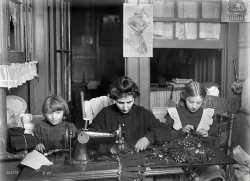
- Hotel Occidental: 1920
- ... I don't think it was open any more at that point.
One night my mother saw Martin Luther King Jr. having dinner there.
The ... Posted by Dave - 08/23/2012 - 5:40pm -
![Hotel Occidental: 1920 Washington, D.C., circa 1920. Gustav Buchholz's Occidental hotel and restaurant on Pennsylvania Avenue. Just out of frame to the left would be Childs' Restaurant, seen a few posts back. Rising on the right is the Willard Hotel. View full size.
The Occidental.My parents went there all the time. (They met there!) I can remember them pointing it out when we would be downtown, though I don't think it was open any more at that point.
One night my mother saw Martin Luther King Jr. having dinner there.
The building immediately to the right and wrapping around to where you see it behind these two buildings is the Willard Hotel--a really great hotel for history buffs!
The Occidental Restaurant has been resurrected in a complex of new buildings that were designed to complement the architecture of the Willard much the way the top of the restaurant building on the right did.
The entrance to the New Occidental is hidden behind the pillar on the left. This one is going to end up on my wall!
View Larger Map
Gorgeous ironwork!I love the ironwork on the building.
Also, I would have hated to paint that sign and I am NOT afraid of heights. That angle just gives me the shudders.
Special Attention to Ladies Also seen in this 1925 Photo:
Special Attention to Ladies
Occidental Restaurant
The Famous Place to Dine
Before or After Theater.
Brown's
Cadillac Auto Service
Competent Chauffers
AAA logoDoes anybody know if the "AAA" on the medallion over the doorway is some sort of rating for the hotel or from the Automobile Assoc. of America?
[American Automobile Association. - Dave]
The W BuildingThe ornate sculptural pendant under the Occidental's balcony bears a shield with the initial W, not O. Was the hotel originally built as some kind of annex to the Willard?
[The Occidental opened in 1905 next to the Willard Hotel, which was known at the time as the New Willard to distinguish it from the original building. The Occidental's owner was Henry A. Willard, who with his brother started the "old" Willard Hotel in the 1880s. - Dave]
1920 UV ProtectionThose ubiquitous awnings.
Occidental signI remembered the Occidental sign from the creepy 1925 KKK march photo you posted last month. The sign had changed somewhat in five years.
https://www.shorpy.com/node/5572?size=_original
+95Below is the same view from May of 2015.
It is interesting to note that on October 26, 1962, John Scali of ABC News met with Aleksandr Fomin, the counselor of the Soviet Embassy, in the Occidental Restaurant shown in the picture above. During dinner, they engaged in back-channel diplomacy that was key in diffusing the Cuban Missile Crisis. The booth in which they had dinner was moved to the new Occidental Grill (noted by C Kim below) a few doors down. A plaque notes the historic event over the table in that booth. It's where I usually sit when having lunch there and the booth is a real tight fit.
(The Gallery, Cars, Trucks, Buses, D.C., Eateries & Bars, Harris + Ewing)](https://www.shorpy.com/files/images/16601a.thumbnail.jpg)
- Cranked: 1937
- ... scattered on that floor, I'd say someone got hammered last night. Well, I did say it was so wrong to say.
Wallpaper As an ... Posted by Dave - 12/11/2012 - 4:45pm -
![Cranked: 1937 April 1937. "Bureau in the bedroom of the house occupied by the Ingrahams and the Smallwoods near Nelma, Wisconsin." A cryptic tableau if there ever was one. Medium-format nitrate negative by Russell Lee. View full size.
Way "Up North"As a native Wisconsinite, I can honestly say that I have never heard of Nelma, WI, which appears to be a speck on the map.
Nelma is about as far "up north" (a term used by natives to refer to the northern lakes and forest areas of the state where many have summer homes/cabins and where the deer hunting culture is king) as a Wisconsin town can be. And, it should be pointed out, that the Ingrahams's and Smallwood's home is only "near" Nelma, which makes it even further removed from civilization. The paper on the bedroom walls gives new meaning to the term "wall paper". (Let's hope that there is some insulation under it somewhere as the subzero temperatures in this neck of the woods can be extreme.) The artwork on the wall appears to be Dutch, but is not Vermeer. The bottles under the dresser could have contained liquor or liniment, both of which would have been necessary to survive life in Nelma. I don't want to think about the possibilities of why the hammer was lying side-by-side with a pair of boy's shoes. In addition, one can only hope that the two families were able to survive the seven years' bad luck that may have come as a result of the breaking of the mirror. As Dave stated, this indeed is a cryptic tableau.
Old-school audioIn strictly temporal terms, playing a cylinder in 1937 would be like today sticking one of those round, silvery things - what are they called again? Oh yeah, CDs - into a machine rather than downloading or streaming an mp3 to your mobile device.
Unless I'm MistakenThis tableau is one of the sets for Edison's lost 1909 version of The Shining.
Functionality of wallpaperIn response to LilyPondLane's submittal: In our modern times, wallpaper is merely a form of wall decoration. Formerly, wallpaper had a utilitarian function to seal the interior space of the house, and prevent drafts. Many houses did not use sheetrock or plaster on the walls, and cold air could seep in past the wood siding and planking.
Copyright InfringementI'd say this is a crime scene photo -- of a cylinder bootlegging operation!
Why?My question is, why is there even a photo of this scene? It may be interesting to look at 75 years later but I doubt in 1937 it was that impressive.
[It is one of the many thousands of pictures taken by Russell Lee and his colleagues documenting housing conditions for the Farm Security and Resettlement Administrations. - Dave]
This is so wrong to sayJudging by those empties and what else is scattered on that floor, I'd say someone got hammered last night. Well, I did say it was so wrong to say.
WallpaperAs an illustration for the utility of wallpaper as described by MaxCohoon, I have attached two photographs from the same series that show the house from the outside. It is constructed of logs. The caption for the detail photograph reads in part: "Note the earth fill around base to keep in warmth in the winter. The space between the logs is usually filled with cement or mud. The windows are removed when a house is abandoned; people cannot build glass."
Old AudioEdison actually made cylinders until 1929.
From a Victrola collectorThe mechanism looks like an Edison Amberola 30, but that cabinet is spartan. I'm not sure what the model number is without the ornate oak cabinet.
Edison Amberola 30Agree with Michael that the machine is an Edison Amberola 30. The "-ola" suffix referred to an internal horn machine [Victor = Victrola, Columbia = Grafonola, etc.], and the cylinders made for use on the Edison machines were known as "Blue Amberols".
Regarding sstucky's comment, Edison did make cylinders until the fall of 1929, by which point they were recorded using the electrical, rather than acoustical, recording process. Although cylinders had long since fallen out of favor with the record-buying public at large, Edison continued to produce them on the basis of many rural folks still having the older machines--this photo is a good indication of that marketing strategy.
Ola!Victor claimed they chose the suffix -ola for their new internal horn machine because it had "a sound suggestive of music". Suggestive of music, perhaps, in that it was quite suggestive of another company's product: Aeolian's brand of player piano, the Pianola. Swiping other people's suffixes isn't without its poetic justice, and soon other phonograph companies began coming out with their own "olas" (actually the "o" was part of the word "piano"). Eventually an auto parts company, which had never manufactured pianos or phonographs, would appropriate it as a name for their new car radio, a name that's still around today.
(Technology, The Gallery, Russell Lee)](https://www.shorpy.com/files/images/SHORPY_8b30346a.thumbnail.jpg)
- Sun Belt: 1937
- ... mighty long fingernails for a fieldworker! Bet he has a night job with a banjo.
Guitar Man Right hand fingernails long for ... Posted by Dave - 08/15/2014 - 3:21pm -
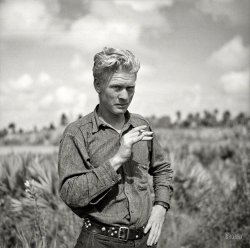
- Joy Unconfined: 1915
- ... and banged into all the time. Especially on a saturday night with Grandma's homemade wine :):)
Creepy Looks like he little girl ... Posted by Ken - 08/04/2012 - 2:01pm -
![Joy Unconfined: 1915 Summer 1915. Dancing to the tunes coming out of an Edison Home Phonograph at Broad Channel, N.Y. George Grantham Bain Collection. View full size.
PrecariousMy eyes were drawn to the huge 'speaker' on the phonograph. It looks far too easy for someone to come by and accidentally whack it. Although this is a staged photo, were phonographs placed so casually around a home? Were the speakers frequently snapped off and needing replacement?
wow, that's neat!wow, that's neat!
Yes the big horns wereYes the big horns were bumped and banged into all the time. Especially on a saturday night with Grandma's homemade wine :):)
CreepyLooks like he little girl moved during the shot, giving her a creepy two-faced look.
HornLooks like that horn was probably knocked around quite a bit. It appears to be hung from something with some string.
Watch out for Two-faceI don't trust that girl. She's a two-face
PhonographyA phonograph amplifying horn of that size was generally only attached to the machine when it was in use. When not being played, the horn was removed and the machine closed in a wooden cover somewhat similar to those for old sewing machines.
"Cranes" -- devices which held large horns-- were sold seperately, but many folks got by with makeshift arrangements such as this with strings or chains attached to some handy object to support the horn.
ghostlyWhy is this photo so creepy? Is it the exposure?
No cylinder!This is a cylinder phonograph but there is no cylinder in the spindle so it can't be playing.
[The cylinder is on the mandrel at right (enlarged below). The part to the left that you're calling the spindle is the feed screw. - Dave]
(The Gallery, G.G. Bain, Kids)](https://www.shorpy.com/files/images/19860u.thumbnail.jpg)
- Million Dollar Highway: 1940
- ... but the car traffic was not conducive to this.
The night before we left for the ride a shop owner in Ouray gave bikers this ... Posted by Dave - 04/23/2008 - 9:39am -
![Million Dollar Highway: 1940 October 1940. "Million Dollar Highway is cut through massive rocks in Ouray County, Colorado." U.S. 550 between Silverton and Ouray. Now a paved modern highway, this is a spectacular mountain route that I've driven many times over the years. View full size. 35mm Kodachrome transparency by Russell Lee.
Ouray ActivitiesThe creek you see at the bottom of the photo flows into Ouray and is diverted through perforated pipes set along the canyon rim in the winter. The sheets of ice formed by the water trickling over the rocks create a perfect ice climbing venue, with competitions every January and February. The creek flows into the Uncompaghre River (Native American name meaning "no cell service"). The hot springs in town are a great way to take the chill off your bones after a day on the ice.
[My favorite summer activity: Jeeping the Alpine Loop and exploring the ghost towns along the way. Especially Animas Forks. The Western Hotel in Ouray is a good place to stay. Or the Beaumont if you want fancy. - Dave]
Red Mountain Pass If I am not mistaken this section of road climbs over Red Mountain Pass.
A few years back I rode my bicycle over this pass, with 750 other riders,on the way to Durango. While it is now a "modern paved highway" it still has no guardrails as they would be an impairment to clearing the many feet of snow they get each year. The drop off right next to the edge of the road(first on the right side then the left) made some want to hug the center line, but the car traffic was not conducive to this.
The night before we left for the ride a shop owner in Ouray gave bikers this advice. "For the first 12 miles lean left. For the next 12 miles lean right."
Bus ride anyone?This is truly one of the greatest last frontier drives ever. We used to drive up from New Mexico to play basketball with Ouray and Silverton. This road made bus trips very interesting. Great photo.
HistoryThe Million Dollar Highway got its start in the 1880s as a 12-mile toll road between Ironton and Ouray, a remarkable feat considering it was before the age of the internal combustion engine and done by men with picks and shovels, working in snow and very low temperatures. Drive thru in the winter to appreciate. I've jeeped this area extensively... see pics at
www.fotki.com/tbill and
www.fotki.com/tbilmelms
550I remember riding over this highway during WW2 when I was a very small child. It wasn't paved yet and was just barely passable for two vehicles going in opposite directions. The driver always had to honk when approaching a blind curve, and the car on the outside had to move over and stop for the inside vehicle. I was terrified and spent much of the trip huddled down in the back seat with my eyes closed.
We lived in Pagosa Springs at the time, and I am a Colorado native, so mountain roads were nothing new to me. But this one was the worst. I was between 3 and 4 at the time.
Eek!I have driven this during the summer and even then I wanted to hug the centerline. I can't imagine driving this during the winter.
Golden RuleWhen I was a kid in the 40's, we were taught that the name for the Million Dollar Highway comes from the value of the ore-bearing fill that was used to construct it. As kids, we would gather mill tailings from the road sides in the mountains and take them home to extract gold by crushing and panning. We would alway get a few flakes of gold. I'm sure that there are few or none of these piles of tailings left because the price of gold now makes it profitable to use the very low grade ore.
(The Gallery, On the Road, Russell Lee)](https://www.shorpy.com/files/images/1a34174u.thumbnail.jpg)
- Co-op Gas: 1941
- ... you find out here --
Neon Tower I'd love to see a night photo of this Moderne gas station, since the tower has lots of neon ... Posted by Dave - 02/13/2020 - 8:31pm -
![Co-op Gas: 1941 August 1941. "Cooperative gas station in Minneapolis, Minnesota." Medium format acetate negative by Marion Post Wolcott for the Farm Security Administration. View full size.
Co-Op Doo-WopThis photo has a very 1950s look to it. I suppose life, fashion, architecture and design in particular, took a break during the '40s while all efforts focused on WWII. Sometimes I wonder how different the 1950s would have been if the war had never taken place.
I only know of co-ops in New York CityI thought co-ops were member owned apartments in the Big Apple. Well, they are.
I didn't know about other co-op ventures, like this service station. By the way, if you look by the left shoulder of the attendant, you'll see Walker Mufflers for sale.
I did a search on Walker exhaust and muffler systems, and by golly, they are still in business.
The things you find out here --
Neon TowerI'd love to see a night photo of this Moderne gas station, since the tower has lots of neon tubing on it. There is some neon around the overhang as well. Canada has lots of Co-op gas stations, particularly on the Prairies and in the West. Here is a list of Co-op stations on Vancouver Island, with the Canadian term "gas bar" used.
Fill it Up?Just think, most people under 40 or so have never had a person come out and fill up their tank at the gas station.* I remember the first time I had to do it myself. It was down south in 1976. We ended up with self-serve up north where I lived a few years later.
[*Unless you live in New Jersey or Oregon. - Dave]
TiresI remember when they came spiral-wrapped in brown paper.
August 1941Four more months that pile of tires will be just a memory. All the rubber for the war effort among a host of other sacrifices by Americans and their families.
Co-OpedThere was a Co-Op gas station in my home town in central Ohio in the 1950s and '60s. It was part of the Farm Bureau agricultural supplies center, which was run as a cooperative with local farmers.
CO-OP ragtopWow! All the way from Virginia in a 1941 Buick convertible (rag top).
Probably not many convertibles in Minneapolis due to the short top down season and long northern winters. Pre-war good times.
Red River Co-opThe full name of the Co-op gas stations and supermarkets in Manitoba is Red River Co-op. Photos below are of Winnipeg, my hometown.
The Virginian brideA plausible candidate for the driver of the car in the Minneapolis gas station in August 1941 with Virginia plates is photographer Post Wolcott. Before the war and rationing FSA photographers drove more than they hopped trains. We know Marion Post had wed Leon Oliver Wolcott by August because her colleague John Vachon reported the news to his wife Penny in a June 27, 1941 letter. Her groom was a deputy director of a section of the Department of Agriculture, and in her 1965 oral history she explained that her marriage came with two children and a farm. Her Smithsonian bio places the farm in Virginia. Before August 1941 was over, her car had reached grain elevators in Minot, North Dakota, dude ranchers in Birney, Montana and a farm family in Laredo, and main street in Sheridan, Wyoming.
Massachusetts has a local option Attendant required to fill tank in the next town over.
Yeah, it's weird. Since only the folks who live there are inexperienced at filling their own tanks. The rest of us come from places where we're trusted to manage on our own. It's a "safety" thing, I guess, like the stickers requiring you to turn off your cellphone while filling, which seem to have disappeared.
(The Gallery, Cars, Trucks, Buses, Gas Stations, M.P. Wolcott, Minneapolis-St. Paul)](https://www.shorpy.com/files/images/SHORPY-8c15191a.thumbnail.jpg)
- Sideways: 1919
- ... who received a deep gash in her head in the accident, last night reported to the police that in the accident or while she was on the way ... Posted by Dave - 03/24/2013 - 12:44pm -
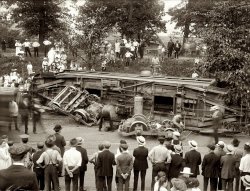
- Winning Swimmers: 1927
- ... outstanding athletes of the world, died at 7 o'clock last night at the age of 27 in Columbia Presbyterian Medical Center from the effects ... outstanding athletes of the world, died at 7 o'clock last night at the age of 27 in Columbia Presbyterian Medical Center from the effects ... Posted by Dave - 08/14/2016 - 3:52pm -
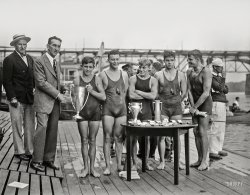
- .. : 1920
- ... assembly witnessed a survival of the ballet Coppelia last night, staged in the large ballroom of the Hotel Plaza."
You Got Me OK - ... Posted by Dave - 10/04/2012 - 10:28am -
![.. : 1920 New York circa 1920. "Dorothy Leary & Dorothy Quinn." 5x7 glass negative, George Grantham Bain Collection. View full size.
Double Doh!At first I thought it was braille. Yes, computer monitor braille.
Dancing Dolls at the PlazaThe photo appears to document the costumes of two socially prominent debutantes who appeared in a charity performance of "Coppelia" held at the Plaza Hotel on January 27, 1920, a benefit for the Orphaned Babies' Home. The amateur performers were all alumnae of Miss Clara Spence's School for Girls on West 48th Street, and the production was staged by the Metropolitan Opera's truly game choreographer, Ottokar Bartik. As usual for this kind of society event, the New York Times lead paragraph described those who attended as a "brilliant assembly," but included a rare and brilliant typo in the lead sentence: "A brilliant assembly witnessed a survival of the ballet Coppelia last night, staged in the large ballroom of the Hotel Plaza."
You Got MeOK - that title took me a little while to figure out. Touché.
Doh!It's the two Dots. NOW I get it.
Alternate Title: 1920
Period humorSometimes it's hard to get the point.
[Punctuation! - Dave]
Oh, Doctor!I see Dots before my eyes!
The Evil TwinWhen comparing the two, the standing Dorothy seems to be rougher around the edges. A sterner face, frizzier hair, and wrinklier dress. Where the sitting Dorothy seems sweeter, softer and smoother. And look who got to sit down for the picture.
I've had itI told you I wanted to sit in the chair. Standing Dot appears a little angry.
Re: Period humorDave and tterrace have set the barre high for the next calembour.
(The Gallery, G.G. Bain, Portraits)](https://www.shorpy.com/files/images/SHORPY_30137u.thumbnail.jpg)
- Apples for Orphans: 1925
- ... She was 12 and she and her friend would sneak out at night. There was an Army camp nearby and the soldiers would gather around to ... Posted by Dave - 09/11/2011 - 8:34pm -

- Drill and Tool: 1942
- ... She ground with precision all day ... then partied all night!
Progressive, in its time RD&T was considered a very ... Posted by Dave - 07/30/2012 - 10:53am -
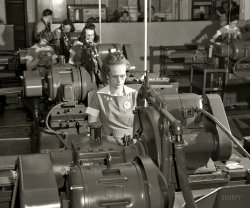
- Truck Museum: 1941
- ... of either power steering or air conditioning. I drove the night shift from 6PM to 6AM in a tanker carrying 80000 pounds when full and ... Posted by Dave - 08/02/2012 - 9:54pm -
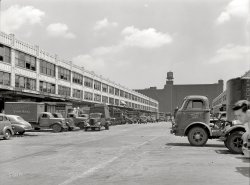
- Lincoln Park: 1905
- ... with young men and women "spooning" under the bridge at night!
Looks so peaceful But remember, all of the people in this photo ... Posted by Dave - 08/08/2012 - 7:12pm -
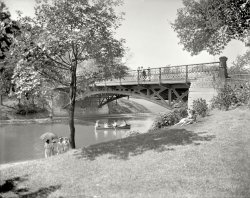
- Pioneer Parachute Packs: 1942
- ... of parachutes being made and packed properly. It was the night of the Christmas program of my son's preschool class. A friend of mine ... Posted by Dave - 08/08/2012 - 7:36pm -
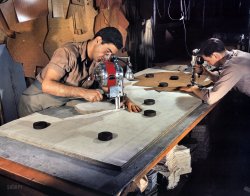
- A Summer Place: 1906
- ... would make the heat more than bearable, especially at night. You got your path down to the beach, your baby banana trees, your ... Posted by Dave - 08/14/2012 - 4:27pm -
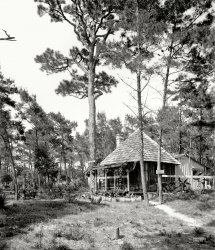
- In My Room: 1941
- ... on floor under sink, wallpaper that won't keep you up at night. Wisconsin was a home game for the Gideons, so that is certainly covered ... Posted by Dave - 02/26/2020 - 8:01pm -
![In My Room: 1941 June 1941. "Untitled (Hotel room, Milwaukee, Wisconsin)." Medium format acetate negative by John Vachon for the Farm Security Administration. View full size.
The everyday worldI like some of these photos by Vachon - no drama. no pathos, no unusual point to be made, just a document showing how things were and what they were. The "stick" telephone, the sink, the style of furniture, all these give a feeling of the time and place.
The Hotel WisconsinA July 5, 1941 letter to Vachon from FSA's Roy Stryker indicates Vachon was staying in the Hotel Wisconsin on this visit. That 500-room hotel, constructed in downtown Milwaukee in 1913, survives today as a renovated apartment building.
Chicken wireIs that what was used for a screen? Can't imagine it would keep too many insects out!
[Zero chickens here, so it must work. - Dave]
That ashtrayDAMN that's a big ashtray. I assume that's what the flat glass object on the dresser is.
High-capacity, perhaps, as a safety measure, to reduce the frequency with which it would be dumped into the trash, with the attendant fire risk?
Signs of the TimesI love the placement of the faucet spout. So high up the wall. It would be great for washing your hair. Although the splashing from so high up could be messy.
With his wallet out and so close to the pillow, do you think this could have been for police evidence? Taken just after his room was broken into?
And a soon to be a vanishing relic from the past. The telephone book. It was such a basic necessity back in the day. Now you can hardly find one.
Dang I love this site. Thanks guys.
Welcome to the Hotel WisconsinLooks like John Vachon is staying at the Hotel Wisconsin, which is now the Grand Wisconsin Apartments. The view is looking east toward Waldheim's Furniture, and that building also still exists.
ChickenwireThe chickenwire was embedded in the glass to prevent it from shattering. Used to be quite common.
Re: Chicken wireI think that is that kind of glass they used to have in old schools that had wire embedded in it to keep it from shattering.
re: Chicken WireLooks like a kind of safety glass. It had 'chicken wire' embedded in it. My grade school had this in all the ground floor windows and doors.
Nothing missingSteam heat, operable window with shade and drapes, dresser with mirror, ashtray the size of a wading pool, comfy bed, Ameche with directory, nightstand with lamp, sink for morning wash & brush-up, mystery ellipse on floor under sink, wallpaper that won't keep you up at night. Wisconsin was a home game for the Gideons, so that is certainly covered also.
All you could expect of a downtown hotel room in 1941. I'm guessing that it's about a $5 room.
700 Block of North Plankinton AvenueI don't think the hotel is still there, but the building across the street still is. It is the old Waldheim's Furniture Building. Now loft condos.
https://www.wisconsinhistory.org/Records/Image/IM47664
https://www.corleyrealestate.com/idx/listings/river-front-lofts/
Where's the Beer?I guess some things are best kept out of sight.
re: Chicken WireThe wire mesh glass is more fire-resistant than regular glass (but less tough). And Shorpyites know all about hotels and fires...
(The Gallery, Cars, Trucks, Buses, John Vachon, Milwaukee)](https://www.shorpy.com/files/images/SHORPY-8c19667a.thumbnail.jpg)
- Birthday Party with Grandma, 1953
- ... goils had their hair set, no doubt in rubber curlers, the night before. By the way, I'll have a slice of that cake with my coffee please. ... Posted by der_bingle - 09/12/2011 - 4:41pm -
![Birthday Party with Grandma, 1953 My cousins, Oak Park, Illinois. 1953. Tom (left) is the Birthday Boy. 35mm slide. View full size. The living room was seen earlier in this post.
Lovely birthday table setLovely birthday table set with Fiestaware in assorted colors. And what grandma's house would not be perfect without antimacassars on the chair? But more importantly, look at those sweet faces.
Camera caseUnless my eyes deceive me that's a Kodak carrying case on the table behind Grandma, and that's definitely a Kodak yellow box. Slide film? It could be 8mm movie film, too.
Hello!I would dearly love to have that Western Electric model 202 telephone on the table behind Granny. It was probably pushing 20 years old when this photo was taken.
Harlequin ChinaWe owned this very same china which my mom bought in Woolworth's. It came in colors like Fiesta but was shaped differently, a little more streamlined, and was called the "poor man's Fiesta." I believe it was reproduced in the early 70's in different colors. Some people still call it Fiesta. All of it was made by Homer Laughlin China Co. The little goils had their hair set, no doubt in rubber curlers, the night before. By the way, I'll have a slice of that cake with my coffee please. Ain't Grandmas GRAND?
It's HeeeeeeeereMeanwhile, biding its sweet time against the living room wall, lurks what would become the devouring beast of the second half of the century.
Sweetly simple treatsLooks like an angel food cake by the shape of it, with tiny cups of mints beside plates of ice cream. Perhaps someone called out to hurry up and snap the picture because those ice cream slices are just about to melt!
Compared to the mountains of trash generated by today's paper party supplies and the expensive favors and goody bags, this party looks wonderful. Everybody's enjoying cake- and time with Grandma. I love this photo.
Nice slice of lifeSomeone should have reminded them it was time to blow out the candles.
Motorola TVGrandma is right up to date with her new Motorola TV, probably made right in Oak Park. It looks to feature a 16" (measured diagonally) rectangular picture tube, which was likely made for Motorola by National Video Corp. the company that along with Motorola later introduced the first successful rectangular color CRT. Motorola's advertising jingle was sung to the tune of "Happy Birthday" using the words "Motorola TV."
Re: It's HeeeeeeereGreat observation/comment, Vic. Who could have imagined that we'd go from an unobtrusive box to a monstrous 62-inch flat screen "devouring beast?" I remain faithful to my 32-inch Magnavox encased in a simulated wood-grain cabinet. It's a retro dinosaur!
GE whizThat's a General Electric TV, a 1951 model. I do agree that it's probably a 16 inch set as it looks almost identical to Model 16T3, but for the fact that the top appears to be flat rather than arched.
[General Electric 16T5. - Dave]
(ShorpyBlog, Member Gallery, Kids)](https://www.shorpy.com/files/images/1953_1.thumbnail.jpg)
- Obligatory Awnings: 1901
- ... displayed watches at 10:10 to commemorate the time of night that Lincoln was assassinated. Seems to be a false tale.
(The ... Posted by Dave - 09/01/2020 - 10:57am -
![Obligatory Awnings: 1901 Washington, D.C., circa 1901. "View of F Street N.W., north side, between 12th & 13th Streets, showing various business fronts along the block." 5x7 inch glass negative. View full size.
I was told- - -the reason for the clock hands in the 8:20 position was to not obscure the watchmaker's name that was located beneath the centre.
THE GOOD OLD DAYSI can remember when almost all the shops in the downtown area where I grew up had those awnings out front. That was in the days before AC units on the roof. The stores tried to keep out the direct sunlight and they had ceiling fans in the store and swamp coolers on the roof.
Elegant EdificeSeen on the right is the impressive Shorpy building. Rising high above F St NW. Probably lost to a fire at some time.
Missed opportunityI was thinking that it would have been clever if Mr. Ramsay had painted the hands of the clock face on his sign to read 12:21, his street address.
Gone, But Not Forgotten.The buildings and facades in this photo are long gone - including the Shorpy edifice - replaced by larger, taller, more modern structures. Fortunately, Shorpy is still very much alive and well, having relocated to a virtual community in a virtual world.
12:21My dad once told me that clocks and watches in advertisements always have their hands at 20 after 8 or 10 to 2, not just for the pleasing symmetry but to keep the fields of the clock/watch-face clear directly beneath the 12 and above the 6 so as not to obscure any ancillary dials or timepiece insignias.
Watchmaker, Watchmaker, make me a watchI love that business names were straightforward and to the point. No confusion about the services or goods they offer.
Happy face not discoveredApparently the modern psychological discovery of the 10 and 2 happy face hands vs the frown on timepieces had not be discovered or Mr. Ramsay was a rebel. If you notice virtually all timepieces for sale are set at 10 and 2 so you are happy to buy.
[As veteran Shorpyites will tell you, it's always coming up on 8:20 at the local jeweler's. - Dave]
The Hands of TimeThe 8:20 time strategically places the hands in a position where they do not cover jeweler's name. Looks like good marketing to me.
TimeSixty years ago my granddad told me that the only person who knows the correct time is the one with only one watch or clock.
Nixon Importers, right next doorI wonder what they imported?
Coming soon: Topham's Trunks for TravelersThe new "Shorpy" building immediately to the right of 1221 F. Street NW address was soon occupied by an enterprise owned by James S. Topham, selling steamer trunks for travelers. Thankfully, a reference librarian in the Prints and Photographs Division at the Library of Congress was interested in discovering the history of that building, and blogging about it on the Library of Congress's website: https://blogs.loc.gov/picturethis/2019/04/double-take-a-trunk-full-of-qu...
10 and 2I had heard years ago that jewelers displayed watches at 10:10 to commemorate the time of night that Lincoln was assassinated. Seems to be a false tale.
(The Gallery, Bicycles, D.C., D.C. Street Survey, Stores & Markets)](https://www.shorpy.com/files/images/SHORPY-40281a1.thumbnail.jpg)
- Round Two: 1897
- ... happening as fast as a boxing match in this period? At night in low light conditions? I'm starting to develop a bit of skepticism on ... Posted by Dave - 08/09/2012 - 11:42pm -
![Round Two: 1897 Aboard the warship U.S.S. Oregon circa 1897. "Second round." Our third look at this nighttime boxing match. 8x10 glass negative by E.H. Hart. View full size.
These Boots Were Made for WatchingI wonder what is the story about the guy with the boots.
Re: CookieCan't be. No ciggie with an inch of ashes hanging over the guy below him. Cf. Camp Swampy.
Down goes Frazier!!If radio had been invented by 1897, I would have loved to have heard the great sportscaster Clem McCarthy call this fight. No one did boxing or horse racing better than Clem.
CookieI just bet this guy was the ship's cook -- looks like he belongs over a pot of boiling potatoes somehow. At least if every military cook in every war movie ever made is an accurate guide.
The eye of the tigerThat's the way the fighters seem to look at each other. I wonder who won.
Who's Next?That guy whose face is right in the middle of the two fighters. I remember him from a recent Shorpy post. He still looks ready to get into the ring.
By the way, my money would be on the boxer on the right, if I was willing to wager. He seems to have a little better defensive stance. The fighter on the left just left his face wide open.
Staged?Could photography freeze the motion of something happening as fast as a boxing match in this period? At night in low light conditions? I'm starting to develop a bit of skepticism on whether we're really seeing what we think we're seeing in this one.
Maybe this was a staged "tableau" where the fighters and audience were all told not to move for a minute for the photographer.
[I think you mean "posed." Most flash photos of the eras were time exposures; you can tell how much the various sailors were moving by how blurred they are. - Dave]
(The Gallery, Boats & Bridges, DPC, E.H. Hart, Sports)](https://www.shorpy.com/files/images/4a14638a.thumbnail.jpg)
- Texas Tourists: 1920
- ... for the tin-can tourist. Where the tidal basin basks at night under the hush of the star-flecked sky, where the moonlight falls in soft ... travel and fold down outside the camper to make beds at night. Similar to a modern day tent camper.
(The Gallery, Cars, Trucks, ... Posted by Dave - 04/22/2013 - 9:10am -
![Texas Tourists: 1920 Washington, D.C., or vicinity circa 1920. "Dr. A.A. Foster and family of Dallas, Texas." A second look at the auto-tourists seen here yesterday, and their modified Model T Ford. Harris & Ewing glass negative. View full size.
Not Just a CageThe cage walls are bed springs. I'd bet they either fold down for sleeping or detach to be set up as cots.
Cheap But Seldom CheerfulThe best feature of a Model T (aside from the admittedly low purchase price) was that almost anything one did to change it resulted in something better than that with which one started.
Tin-Can Tourists
Washington Post, August 21, 1921.
Washington Is the Mecca of Open Air Auto Tourist
Washington this season has been the mecca for the tin-can tourist. Where the tidal basin basks at night under the hush of the star-flecked sky, where the moonlight falls in soft spray on the banks of the Potomac, just east of the railroad bridge, the officials have designated a spot where the tin-can tourist may make his bed. There he is cushioned on tufted lawn far away from the hue and cry of the city, out of the canopy of heaven, but near enough at all times to be within reach of things that civilization demands. …
The main attraction to touring in this fashion, all the tourists agree, is that it gives opportunity to study the country, its peoples and their ways. … All agree that the West is where they find the greatest hospitality. The East is not yet ready for the open-air tourist.
For the most part, the tourists run well into age. That is, some of them are nearing the 80-year-old mark. Occasionally there are middle-aged couples, who have with them their children, and once in a while there is a young couple on their honeymoon. …
MomShe still looks just as thrilled.
[Waiting for someone to invent Four-Zone Climate Control. - Dave]
Axe mountI just wanted to point out the slick axe mount on the side of the car. Perfect for clearing the road of fallen trees I suppose.
Kid cage!"Throw the kids in the cage, Maw, it's time to shove off!"
Noting safer for the lil ones than a wire mesh matress-padded compartment for travel.
"With roll-down curtains, in case there's a change in the weather."
Pop Up CamperVery practical bed arrangement. The beds fold up to keep the kids on board during travel and fold down outside the camper to make beds at night. Similar to a modern day tent camper.
(The Gallery, Cars, Trucks, Buses, D.C., Dogs, Harris + Ewing, Kids)](https://www.shorpy.com/files/images/SHORPY_30236a.thumbnail.jpg)
- State-of-the-Art Facilities: 1941
- ... with my grandparents. I especially hated them during the night, especially hot weather, when the wasps made nests there. It's hell to ... Posted by Dave - 02/06/2008 - 3:32pm -
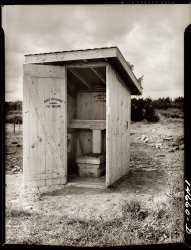
- Outing Equipment: 1920
- ... calls from anywhere in the vicinity of Washington, night or day, is on the streets.
1920s ... Posted by Dave - 11/10/2015 - 10:24am -
![Outing Equipment: 1920 Washington, D.C., circa 1920. "National Service Co. front, 1610 14th Street N.W." Home of 24-hour tire service. National Photo Co. glass negative. View full size.
Seal of ApprovalThese days, we rotate our tires every 6000 miles. So much for the 6000 mi guarantee!
Then and NowView Larger Map
Roadside Service: 50 cents
Washington Post, Apr 6, 1919
24-Hour Tire Service Begins
J.H. Robison Head of Company
Installing Apparatus for Heavy Work
Twenty-four-hour tire service is something new to Washington. It has just been introduced by the National Service Company, which has opened a tire store at 1610 Fourteenth street northwest for both solid and pneumatic tires.
J.H. Robison is active head of the new company, which is specializing on the Firestone line of tires and tubes. Mr. Robison has been for a number of years connected with the American University in the capacity of purchasing agent. Previous to this he filled a like position for the bureau of mines in the Pittsburgh district.
A 150-ton hydraulic press has been installed for handling the sold tire work. There is also set up an oxacetylene welding outfit for cutting off old tire bands and tire bases from wheels fitted with the pressed-on type of solid tires. A service wagon, specially designed, with an overhead trolley and chain hoist for handling heavy wheels, is in operation.
For the pneumatic tire business a complete vulcanizing plant is being installed and a service wagon that will answer telephone calls from anywhere in the vicinity of Washington, night or day, is on the streets.
1920s Taggers!Apparently, graffiti was a problem back in 1920, as well. Take a close look at the lamppost. Danged whippersnappers!
Free AirProprietor: "That'll be fifty cents for the tire fill."
Customer: "I thought the air was free."
Proprietor: "It is but there's a non-waivable atmosphere-to-tire transfer fee."
P.S. The lady in the window is reverse trick of the eye - she's real but looks like a cardboard picture.
[She is covered with mold (on the emulsion, at least), which gives her that washed-out look. - Dave]
Some things never changeI have a fondness for company logos that have remained in use for decades. The Firestone logotype hasn't changed in at least 90 years. That's a good one.
Auto BedsI guess Motel 6 leaving the light on for you wasn't around yet!
Dapper CasperThe ghost in front of 1612 appears to have had his shoes shined.
ChillinI like the milk bottle on the window ledge -- cheaper than buying an icebox, I guess.
(The Gallery, Cars, Trucks, Buses, D.C., Natl Photo, Stores & Markets)](https://www.shorpy.com/files/images/28881u.thumbnail.jpg)
- 33 Center Street: 1910
- ... Post.
Damn Shutters I can hear them banging all night long!
[Try leaving Mr. Shutter a note. - Dave]
Amazing, ... Posted by Dave - 07/04/2011 - 2:16pm -
![33 Center Street: 1910 Detroit, Michigan, circa 1910. "No. 33 Center Street." Why this little house is in the Detroit Publishing archive is a mystery to me. Note yet another of those maypole-style telephone line drops. 8x10 glass negative. View full size.
Central AnnexThe Milner Hotel now occupies the spot where this building once stood. According to the 1910 Polk City Directory, the building at the right, 31 Center Street, was occupied by one Henry M. Catton. The building at the left was the Central Apartments at 35-41. 33 Center was the "Central Annex" and you can see that there is a connection between the Annex and the larger Central Apartments. Perhaps one of the residents of the Annex gained notoriety, prompting the photograph of their residence?
[My guess would be that whatever historical significance this place has lies back in the 19th century. A Google Books search shows that 33 Centre Street was headquarters of the Detroit Woman's Christian Association in 1890. There may have been some connection with the temperance movement. - Dave]
View Larger Map
PhotoworthyMaybe the entry to No. 33 is at the end of that narrow passageway and that is unusual enough to be both noteworthy and photoworthy.
CuriosityJust curious if the pole is actually an electric power drop.The insulators appear to be quite large. This area is in the general area where Edison Electric Illuminating was supplying DC power in the very early part of the 1900's.
I want my Maypole!That's a telephone drop. Single-wire conductors with a ground return. Power lines would be two conductors widely separated.
One more detailAnd a tip of the Hatlo Hat to the Old Hitching Post.
Damn ShuttersI can hear them banging all night long!
[Try leaving Mr. Shutter a note. - Dave]
Amazing, I'm thereI can actually see the Milner and Center street from my window at work right now. No sign of this house.
Thanks for the time-travel-moment, Shorpy.
The paversLook to be wood, probably soaked in creosote.
Window treatmentI like the way that the pediment over the window of the house next door matches the one over the door. Obviously the houses have come down in the world.
Re: I want my Maypole!Actually telephone lines are symmetrical, so they always are a pair of conductors.
[A lot of early systems used a single conductor with ground return. - Dave]
(The Gallery, Detroit Photos, DPC)](https://www.shorpy.com/files/images/4a20588a.thumbnail.jpg)
- Keeping a Low Profile: 1948
- ... Two's company. Three's a crowd!
2001 Later that night she said:
"Stop! Dave!"
He began to sing the words to the 1890's ... Posted by Dave - 07/12/2013 - 12:21pm -
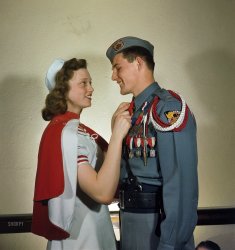
- Grand Hotel: 1908
- ... Ransom I'll bet that penthouse suite cost $10 or $12 a night!
So hard to imagine These things ever existed. Thank God these ... Posted by Dave - 08/03/2012 - 4:07pm -
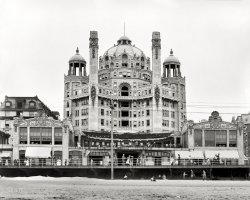
- Hotel Harrington: 1917
- ... image.
Home of the Pink Elephant Room Spent many a night there in the early 1960s as an Air Force officer on TDY. The first floor ... Posted by Dave - 11/06/2013 - 12:22pm -
![Hotel Harrington: 1917 Washington, D.C., circa 1917. "Hotel Harrington, 11th and E Sts. N.W." National Photo Company Collection glass negative. View full size.
Still there and with the same name![Ironically not still there: The Perpetual Building Association building. - Dave]
View Larger Map
Still a great placeI took the family there a couple of years ago to see the Washington sights. It shows its age in many places, but is still a great hotel bargain within walking distance of all the monuments and museums. It has an incredible spiral staircase fire escape inside as well.
Harrington MinutiaeInteresting to note that there's still a fire hydrant-- same location-- on the southwest corner across the street from the hotel. Similarly, the "modern" pay phone on the east side appears in the same spot as the police call box in the 1917 image.
Home of the Pink Elephant RoomSpent many a night there in the early 1960s as an Air Force officer on TDY. The first floor bar was called the "Pink Elephant Room" and it was said that if you were an Air Force officer and walked in for a drink at least one person you knew would be there. Per diem then was $16 a day. A room at the Harrington was $11, breakfast in the basement cafeteria was six bits, and you loaded up at lunch in the Pentagon cafeteria. That left enough for a shot of really vile bar scotch in the PEO. Then off to bed, on the top floor just under the elevator motors.
Our Honeymoon Hotel 40 Years AgoKathleen and I stayed here on our honeymoon in 1973. The Pink Elephant Lounge was still there, though we never ventured inside. (It's since been replaced by the Hemingwayesque Harry's Bar.) The Harrington made it possible for a young couple without a lot of money to have a honeymoon in the nation's capital. And the fresh blueberries in the cafeteria were wonderful!
P.S. We're still happily married.
June, 1977I stayed here in June of 1977 with 200 other "Junior Safety Patrol" 12 year olds. We arrived on about seven Trailways buses for a one week stay and the hotel has probably never been the same since.
I remember our group getting some very ugly looks from the folks who were staying there and I'm sure we deserved it. One memorable incident involved a wino getting pelted with wet toilet paper from a 5th floor window and the D.C. Police going door to door, trying to locate the culprits.
Fresh air fiends?The trees don't have leaves and the pedestrians are wearing overcoats, giving the impression of winter. Yet there are numerous open windows in these buildings.
[It's what you do when your room is overheated. -Dave]
Also GoneAlso gone from the neighborhood, to the left of the hotel, is Judd & Detweiler, printers, where they used to make National Geographic.
TeeVee at the TopThe penthouse of the Hotel Harrington was home to Washington's first TV station, W3XWT, which took the air in 1945 under the guidance of Dr. Thomas T. Goldsmith Jr. of Du Mont Labs. Dr. Goldsmith would be rewarded by the use of his initials for the station's final call sign, WTTG-TV.
Short clip about the birth of the capital's first TV station:
http://www.youtube.com/watch?v=iyA0Cod-r9k
Shave and a HaircutBetween 1973 to 1976 I worked for United Press International at the National Press Building about 3 blocks from the Harrington. There was a barbershop on the ground level where I used to go for a haircut and a shave. That was my treat to myself on the odd occasion. Always loved the hot towels on the face and the feel of a really good shave. Sure can't get that anymore at a barbershop.
+98Below is the same view from May of 2015.
(The Gallery, D.C., Natl Photo)](https://www.shorpy.com/files/images/SHORPY_32530u.thumbnail.jpg)
- Central Heat: 1932
- ... plant, especially if the fire was about to go out from the night before! Nice photo, Dave!
[This boiler served, as the caption ... Posted by Dave - 08/13/2012 - 3:27pm -
![Central Heat: 1932 Washington, D.C., circa 1932. "Ben Franklin Press" is all it says here. National Photo Company Collection glass negative. View full size.
Both!At least in our house. It was a gravity-feed system. Hot water rose through the pipes, cool water returned - no pumps at all. Hot water was fed through the thing in a separate coil, I guess. It worked great the first year I lived here.
It's a Clinker!I'm reminded of the scene in A Christmas Story when Ralphie's Dad is doing battle with the furnace. We run that movie on continuous loop Christmas Eve and Day.
MemoriesMan oh man! Where are Ralphie and The Old Man???
Boiler or water heater?I grew up helping my father replace old boilers. The picture is in my opinion a hot water heater. My rationale is there is incoming water, and no pump to circulate the water. The blower on the floor blew air into the fuel area to maximize burning. I would guess this thing used coke. That thought coming from a lack of coal dust around the container. Not sure I am spelling coke correctly, but describing the by product of burning coal in the steel mills. Coke did require extra oxygen to generate heat quickly. Must be someone out there with more knowledge than me about these things!
After Star WarsR2D2 found himself another job.
Turbo charged.Powered by 6' of wire in a 5' BX cable.
Looks familiarWe had one of these babies in the basement of our 1928 row home when we purchased it a couple of years ago. It was still running strong (converted to oil). I was sad to see it go. Shoulda took a picture!
Common to Uncommon; Known to UnknownWhy would one take a picture of something so unremarkable as a steam boiler? And yet had they not, many of us would never have seen such a setup. I imagine some in 1932 thought it was a waste of supplies to take this particular photo -- and perhaps some today think so as well. But now something that was quite routine in that day proves to be a point of conversation and contemplation for us today.
It's interesting to note what appears to be a thermostat on the pipe on the left side, just above the thermometer. Apparently it triggered the blower to fan the fuel source, and hopefully increase the water temperature.
[National Photo took pictures like this because they were commissioned by a client. - Dave]
Steam HeatThis is just your run of the mill residential steam heat boiler. The tipoff is that half-full glass of water in the sight glass. With the ashpit clean the way it is, it's either summertime or Dad just finished up with the chore of removing the ashes and was so proud of himself, he took a picture! The vertical pipe leading down to the bottom of the boiler is the boiler feed valve. Since it looks like there's no automatic boiler feed assembly, Dad had to check the water level in the sight glass maybe a few times a week (more if it really cold out) and add water to the boiler when needed. That blower fan to the bottom left was a nice addition to the plant, especially if the fire was about to go out from the night before! Nice photo, Dave!
[This boiler served, as the caption indicates, a business establishment -- the printing plant of the Ben Franklin Press, 1320 F Street NW. - Dave]
Full of "Go"
National Heating Guide, 1930.
National Round Boiler
This boiler makes a powerful appeal to all seeking a business-like efficient heating unit, free of frills, but full of "go." A total of eighteen sizes, covering 6 grate diameters, provide an extremely wide variety of applications. The boilers are bonded to heat from 175 to 925 square feet of steam radiation, and 285 to 1530 feet of water radiation.
National Round Boilers are designed to perform with all types of fuel: domestic sizes of anthracite and bituminous coal, oil, gas and coke. They can be converted on the job to meet the individual requirements of the fuel selected. The design of the grate and heating surface; the scientific size and shape of the combustion chamber; the serpentine fire travel; the properly proportioned waterways, and the balanced system of air intake and damper controls, all unite to deliver a heating service eminently satisfactory because of maximum heating results from minimum fuel consumption.
Gravity Heating.JK - there is no sight glass. Not a steam boiler.
SD - not a water heater.
jojodc - is correct. It's a gravity heating boiler, but there is no domestic water heating coil in this boiler.
The electric blower was usually for anthracite coal.
The studs-and-plank wall to the right is one wall of the coal bin. Also of note - the foundation of the building shown behind the boiler is structural terra cotta. http://historicbldgs.com/terra_cotta.htm
farkedhttp://www.fark.com/comments/7267203/Photoshop-this-old-clinker
(Technology, The Gallery, Natl Photo)](https://www.shorpy.com/files/images/SHORPY_31002u.thumbnail.jpg)
- Li'l Darlin's: 1955
- ... got "dressed up."
Dream come true Tterrace, last night I dreamed I met you. All I could think of to say was, "Keep posting ... Posted by tterrace - 09/20/2011 - 1:12pm -
